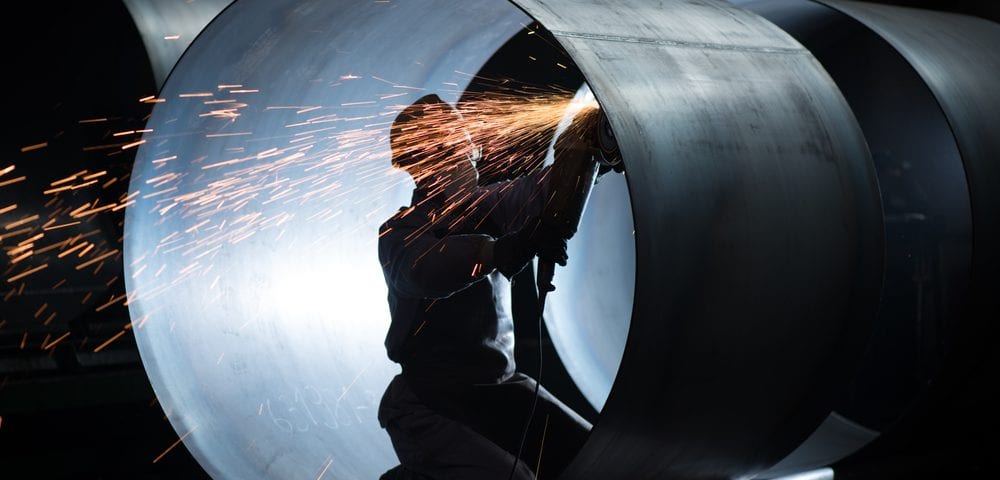Welded Metal Tube Basics, Value and Weld Types

Everything You Need to Know About Mild Steel
May 5, 2021
Brinell and Rockwell Metal and Steel Hardness
June 4, 2021Metal tubing is one of the most important components in many metal and steel fabrication processes and numerous applications, but not all tubing is created equal. There are a couple different types of metal tubing found on the market today, and even these broad categories also contain smaller sub-categories based on the way they’re made – and which of these you choose may have a great impact on the qualities of your metal and its ideal applications.
At Wasatch Steel, we’re happy to offer a variety of steel products, including steel tubing in several shapes, sizes and variations. One of the two major types of steel tube is known as welded tube – why is metal tubing important to begin with, and how does welded metal tubing compare with the other major type? We’ll go over all that here, plus some basics on how welded tubing is manufactured and some of the reasons why different welding formats are often used within this process.
Value of Metal Tubing
As we noted above, metal tubing is a vital component of many metal and steel fabrication processes and common structural applications. Tubing is known for its ability to maintain high strength despite coming in a low weight, plus is generally more affordable than solid metal stock – meaning it’s the preferred option for many structures.
There are two specific types of metal or steel tube: Welded and seamless tube, which we’ll go over briefly below before digging further into the specifics of welded tubing.
Welded vs Seamless Tube
As its name indicates, welded tube is created through the connection of one end of metal sheet or plate to the other. These ends are welded together using one of several different welding formats (more on this in a bit) – which is chosen will depend on several factors, from the actual metal involved to the thickness and a few others.
Seamless tube, on the other hand, involves no welding at all. Rather, there are a few different processes that might be used to manufacture it, including rotary piercing and several others.
Welded tube tends to be the more affordable of the two, as manufacturing costs are generally lower, in large part because it takes less time than for seamless tube. Seamless tube, on the other hand, is more expensive but may offer several specific benefits, including the lack of a welded seam. Choosing between them comes down to a few factors, with both cost and desired application chief among them.
Our next several sections will dig into some specifics on welded tube, how it’s made, and why a few different welding processes are often used for this need.
Basic Welded Tube Manufacturing Method
Here’s the general process for manufacturing welded tube on a professional scale:
- Metal coil will be selected, with a thickness that corresponds to the eventual thickness of the finalized tube wall. This coil will also be wide enough to obtain the needed circumference and diameter of the tube.
- The coil will be fed through several dies, which form it into shape. The two edges of the coil width will be brought closer together as this happens, all the way up until the point where they actually touch and a tube is formed.
- A welding process is used to join the two ends together in a solid manner (more on these welding methods in a moment).
- Depending on which weld method was used, excess weld reinforcement may need to be removed. In some other cases, there may be a heat-treatment process for the new tubing, depending on the application it’s being manufactured for.
- Finally, the tube will be cut to the length needed for the order.
Why Varying Welds Are Used
As we noted above, there isn’t a single weld type that’s used for welded tube manufacturing – rather, there are at least six different variations that may be used. The most common such welding process is known as high-frequency welding, which uses the following process:
- A high-frequency welding power source will be obtained and activated.
- Leads from the power source will be placed very near the formed, but unwelded tube.
- The leads placed near the tube will begin to emit high-frequency energy, controlled by the manufacturer.
- This energy “excites” the molecules in the tube, all the way up to a temperature point at which they can be welded together.
- The heated edges of the tubing are forced together through a separate die, and a weld is completed.
This form of welding is frequently used because of its cost-efficiency, plus how long it’s been around for – it’s an industry standard. It’s also good with issues of poor fit-up, and its continuous manufacturing method allows it to be done even for large bulk projects without wasting time.
However, there are several other processes that may be used. Here are a few, plus a few words in some cases on why they’re generally chosen:
- Laser beam welding: Often used for materials like titanium, stainless steel and other non-ferrous alloys, as these are tougher to weld using traditional methods than mild steel.
- Gas tungsten arc or plasma arc welding: These come at lower equipment costs and are not very complex, which is a benefit to some. But they also have slower travel speeds and larger heat-affected zones.
- Resistance welding: Generally used for medium-diameter carbon steel tube welding instead of high-frequency welding.
- Submerged arc welding: Often used for welded steel tubing with thicker walls than usual.
For more on welded steel and metal tube, or to learn about any of our steel products or steel services, speak to the staff at Wasatch Steel today.



